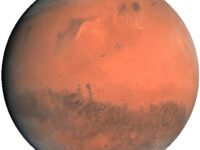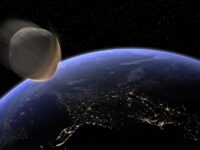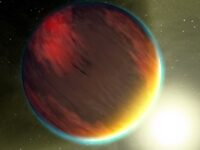What makes Earth feel so much like home? For some, crisp fall mornings and hot coffees make this planet the place to be. Others might argue in the name of our endless collection of island beaches and piña coladas that Jupiter just can’t offer. At the root of it all, though, there’s one thing that we can all agree makes Earth the comfiest destination for humanity’s lifetime residence: water.
Where water can be found on Earth, we can almost always expect to find life thriving alongside it. It is the pinnacle of this planet’s attention to detail in supporting life; water exists as a stable compound in all three states of matter and acts as a nearly universal solvent in its liquid form, aiding in the distribution of other invaluable nutrients critical to existence. Water’s multifaceted chemical characteristics are so ingrained in the processes that facilitate life on Earth that NASA dubbed “follow the water” their motto in the search for extraterrestrial life. So when liquid water is detected on any planet that isn’t ours, it tends to be a pretty big deal — and new results from NASA’s James Webb Space Telescope, or JWST, are no different.
“Water’s multi-faceted chemical characteristics are so ingrained in the processes that facilitate life on Earth that NASA dubbed “follow the water” their motto in the search for extraterrestrial life.”
In early September 2023, University of Cambridge astronomer Nikku Madhusudhan and his team of scientists presented their results on the JWST’s findings while exploring the dwarf star K2-18 and its exoplanets — planets that orbit a star outside of our solar system. One of the exoplanets, named K2-18b, has been a target of NASA’s hunt for water among the stars since as early as 2015 when it was first discovered by the Kepler Space Telescope. The planet took the spotlight again in 2019, this time capturing the attention of a much greater audience, when the Hubble Space Telescope discovered the presence of water vapor in its atmosphere. Given Hubble’s relative limitations at the time, the astronomers from the University College London responsible for publishing the novel findings were unable to confirm whether the atmosphere also contained nitrogen and methane.
Fast-forward through a multitude of exploratory advancements and the successful launch of JWST as a complement to Hubble, infrared astronomy capabilities have provided insight into this previously unanswered question. Both methane and carbon dioxide were detected in Webb’s transmission spectrum of K2-18b, and although the presence of these compounds is plenty exciting, the lack thereof of another compound, ammonia, leads to even more enthusiastic speculation. In 2021, a team of researchers led by Renyu Hu from NASA’s Jet Propulsion Laboratory published a theoretical study outlining characteristics that qualify exoplanets to be considered “Hycean worlds,” planets potentially possessing an ocean-covered surface. Their work showed that planets with liquid water oceans would have increased abundances of carbon dioxide and either water or methane in their atmospheres — and importantly, a lack of ammonia. K2-18b completely satisfies these requisites.
To bolster the buzz around this planet further, the telescope’s results point to the potential presence of dimethyl sulfide, a molecular byproduct that, on Earth, is excreted only by marine phytoplankton.
Humanity’s search for habitable grounds outside the comfy confines of Earth continues to progress with discoveries and detections like those of K2-18b. These most recent findings have been reported to us just two years after JWST was initially launched and represent only the start of a new era of planetary exploration. The discovery of a world potentially covered in oceans beneath a hydrogen-rich atmosphere, similar in description to our very own planet, is just the first drop in the ocean.






